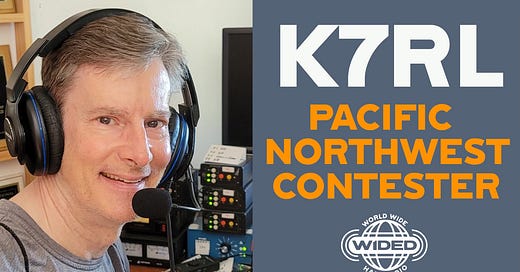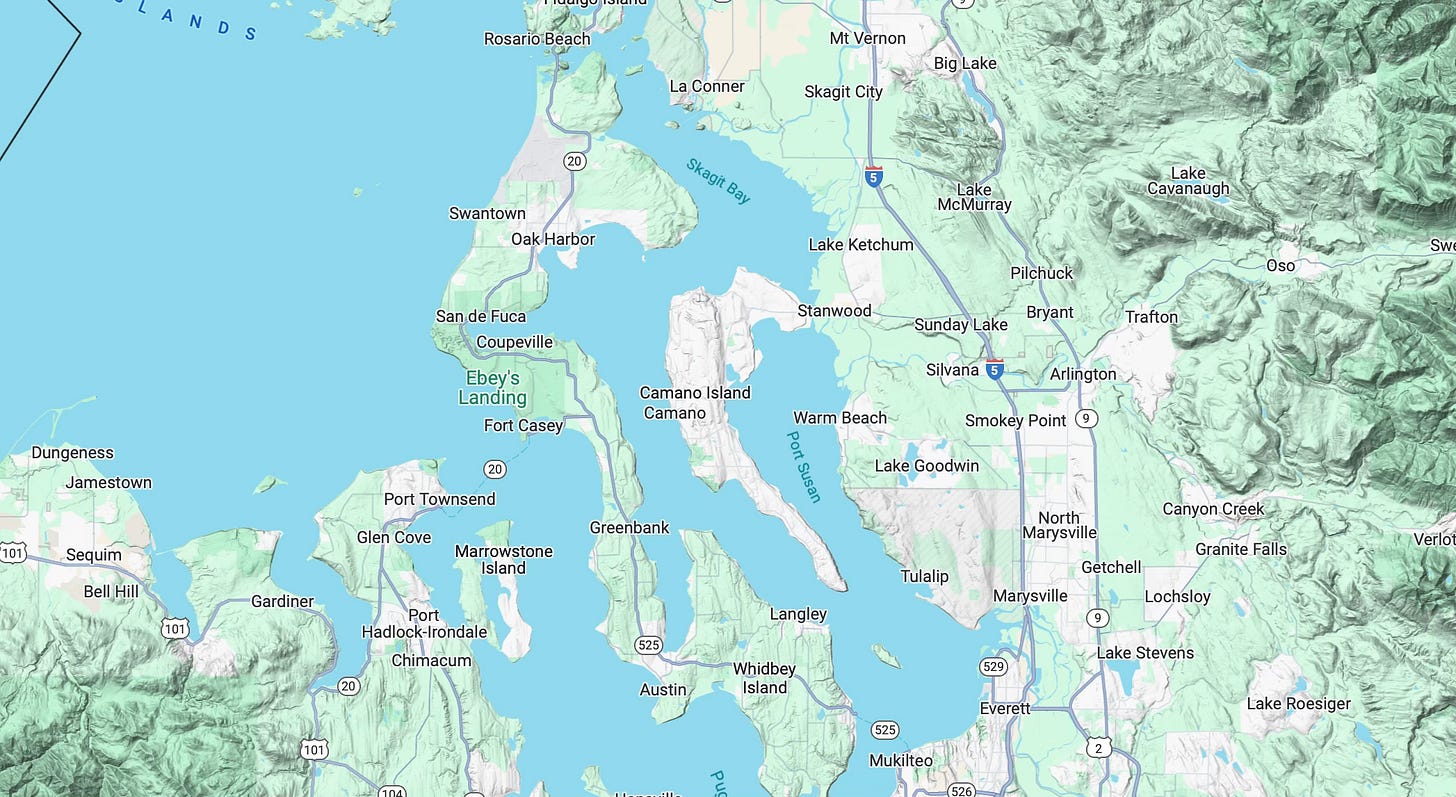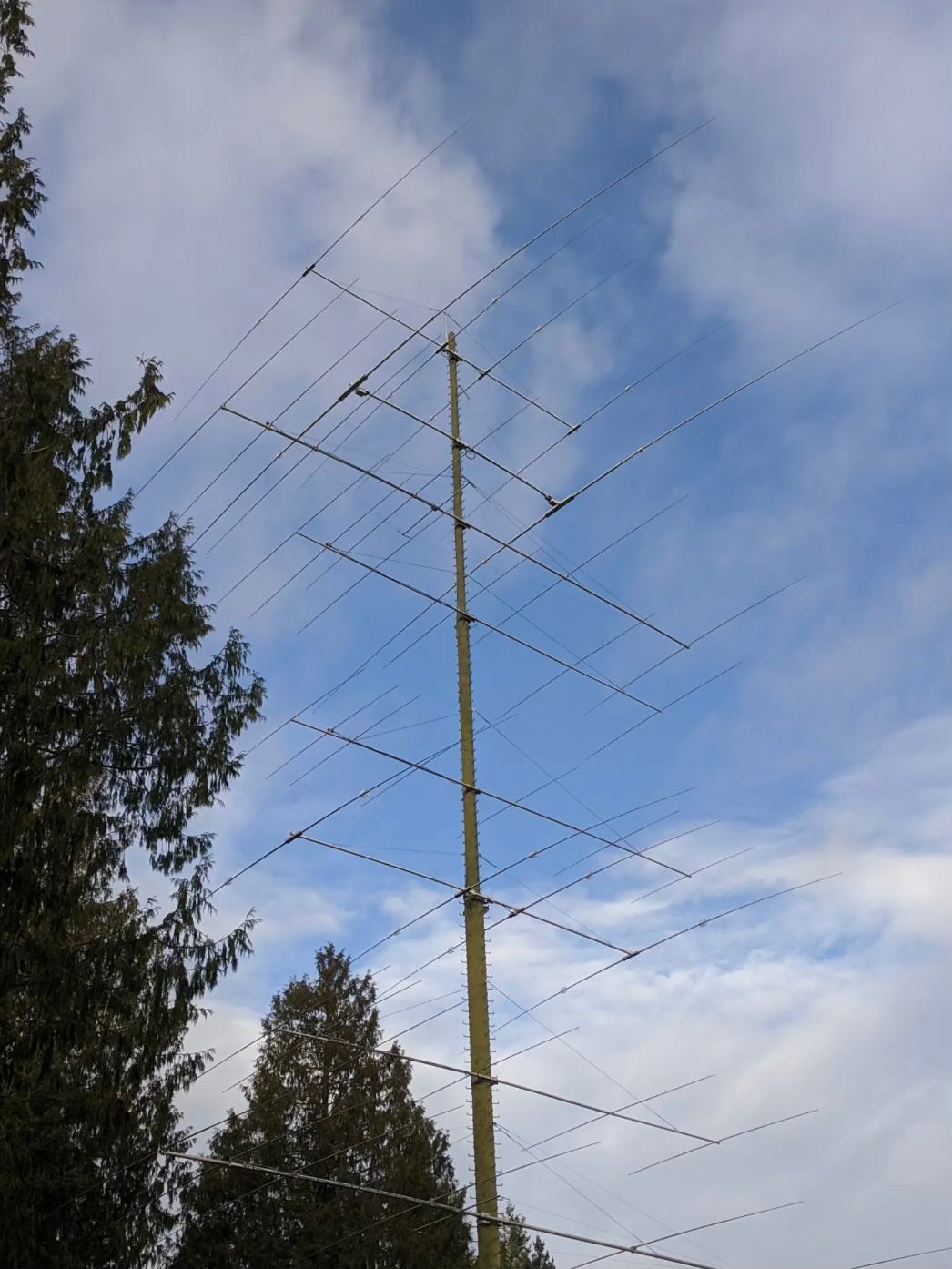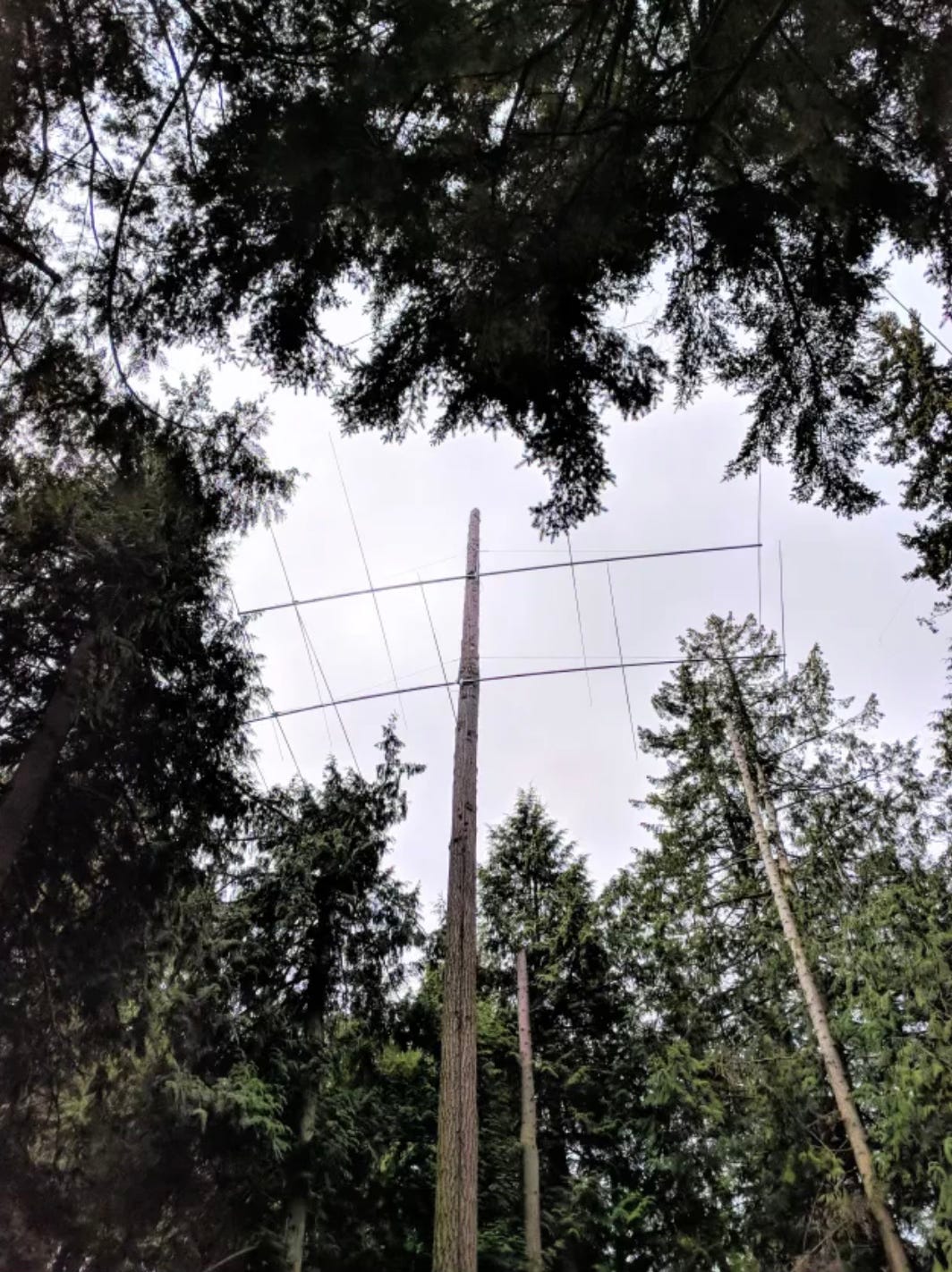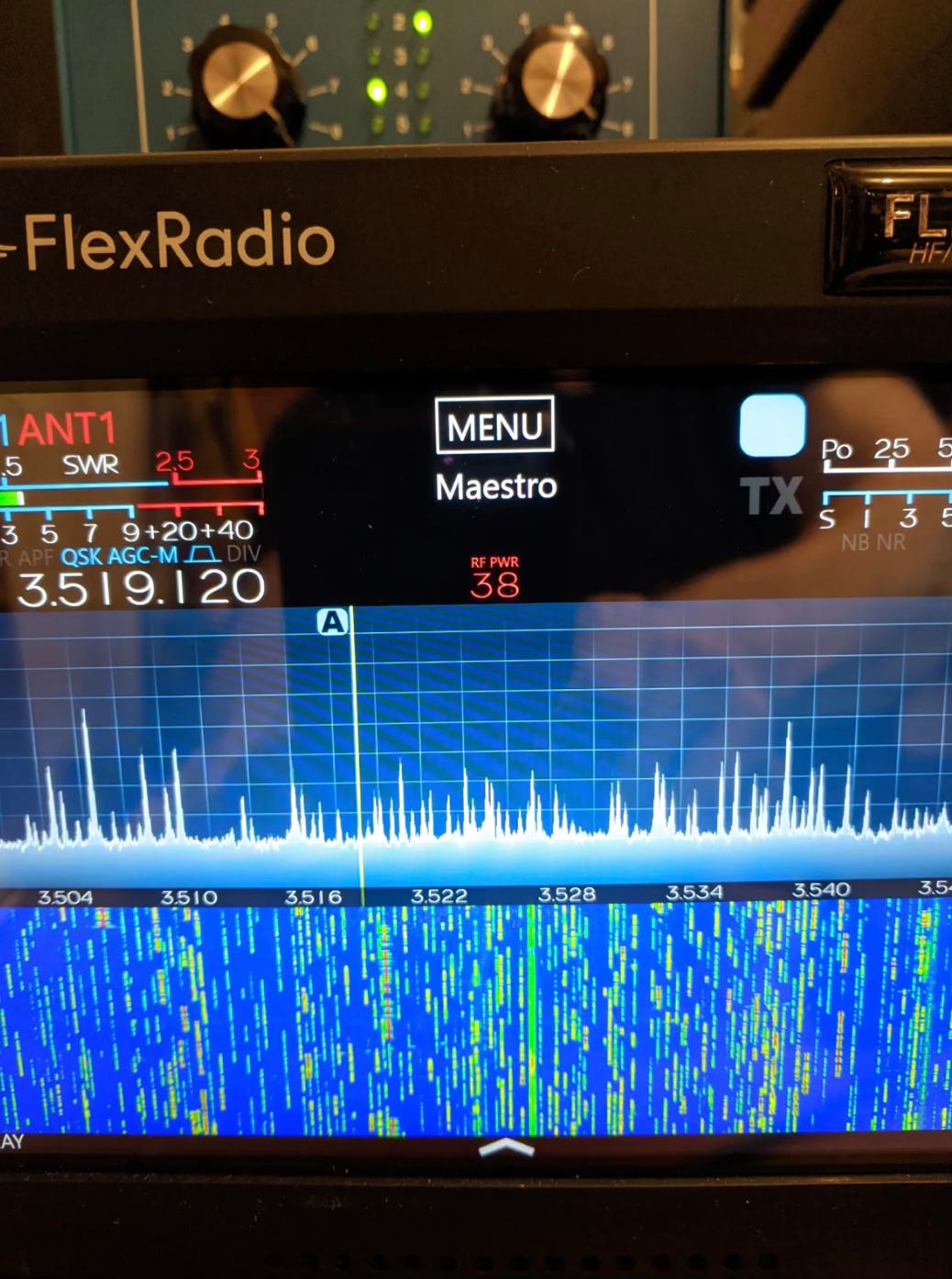A Pacific Northwest Radio Legend In The Making
Mitch Mason, K7RL, may not yet have the name recognition of some East Coast ham radio titans, but his contesting accomplishments place him among the best in the world. Operating from Camano Island, Washington—a location known for its geographical and propagation challenges—Mason has built a formidable contest station that consistently produces world-class results. His journey, like his station, was a long process—one shaped by years of persistence, innovation, and a passion for radio that began with a humble CB setup in the 1970s.
A Love for Radio Born in the 70s
Mitch’s fascination with radio dates back to his childhood, during the heyday of CB radio in the 1970s. His first experience with "skip"—long-distance communication enabled by favorable ionospheric conditions—sparked a lifelong passion for electronics. A neighbor, who epitomized the DIY spirit of amateur radio, built his own equipment and worked the world using a simple dipole antenna. This introduction led Mitch to amateur radio, and by 1986, he earned his General Class license.
It wasn’t until the late 1990s that Mitch became active in the hobby again. A chance encounter with a contest involving Japanese (JA) operators reignited his passion. He quickly upgraded to Extra Class, moved to Camano Island, and began building a contest station that maximized the opportunities his challenging geographic location presented.
Overcoming Geographic Challenges in the Pacific Northwest
Operating from the Pacific Northwest poses unique challenges, especially in terms of radio propagation. The region is notorious for its difficulty in reaching Europe, a key area in many international contests. Unlike operators on the East Coast, who can easily tap into European stations, Mitch often relies on propagation paths stretching across the Pacific, making contesting a matter of patience, strategy, and precision.
Rather than being deterred by these challenges, Mitch embraced them. He adjusted his strategies to take full advantage of openings to Asia and other regions, while becoming adept at monitoring solar activity, particularly the K-index, which tracks geomagnetic disturbances that impact propagation. His ability to seize even brief windows of favorable conditions has elevated him into the top ranks of contesters.
The Evolution of a World-Class Contest Station
Building a competitive station on Camano Island required not just time and money, but also a deep understanding of radio propagation and antenna engineering. Mitch’s station is anchored by a 135-foot rotating monopole—his "Bertha" tower—which supports an array of high-performance antennas covering multiple bands.
On 10 meters, Mitch employs stacked 7-element Yagis, while 15 and 20 meters each use stacked 6-element Yagis, all from M2. For 40 meters, he runs stacked 4-element Yagis from JK Antennas, and for 80 meters, he relies on a JK 802 Yagi. Mitch also strategically placed other towers on his property, including a 60-foot tower with a JK Mega-Tribander and a unique “tree tower” with a Yagi fixed to Japan. These fixed antennas allow Mitch to instantly switch directions without rotating the main tower. Additionally, Mitch has installed a full-size vertical for 160 meters, taking advantage of his proximity to the saltwater of Puget Sound.
The Role of Technology: A Remote-Controlled Powerhouse
Mitch’s station is not just defined by its hardware but also by its cutting-edge technology. With top-of-the-line equipment like the Elecraft K3, FlexRadio 6600M, and Acom 2000a amplifier, Mitch’s station is fully remote-capable. Using software like SmartSDR from FlexRadio and the K3/0 with Remoterig, Mitch or his contesting partner Tony Garland, N7DX, can operate the station from anywhere in the world. This remote capability allows them to participate in multi-operator contests without being physically present, offering a significant advantage when coordinating contest strategies.
As Mitch explains, “It really sounds and feels like you’re at the radio wherever you go.” This flexibility has allowed Mitch and Tony to experiment with multi-operator categories, adding enjoyment and teamwork to their contesting efforts.
A Collaborative Approach: The Power of Teamwork
Though Mitch began as a single-operator contester, he has since embraced the camaraderie and strategic depth of multi-operator contesting. Partnering with Tony, N7DX, Mitch has transitioned into multi-two and multi-single categories, allowing them to share the workload of 48-hour contests. This collaboration, combined with Mitch’s formidable station, has transformed the pair into a powerhouse team capable of achieving top-tier results.
Multi-operator contesting has another key benefit: sleep. Contests like the CQ World Wide DX Contest are notoriously grueling for solo operators. However, multi-operator formats allow operators to take breaks, rest, and maintain high rates of contact without sacrificing performance.
Contesting in the Pacific Northwest: A Different Strategy
For many contesters, the Pacific Northwest is not seen as an ideal location. However, Mitch’s success proves that with the right equipment and strategies, even a challenging QTH can yield outstanding results.
One of Mitch’s main strategies is to focus on Asian and domestic contests, where the Pacific Northwest holds an advantage. In domestic contests like the ARRL Sweepstakes, Mitch’s station is ideally situated to score highly. International DX contests can be more unpredictable, but Mitch’s experience and willingness to adapt often pay dividends.
“When we have a low K-index, we usually have a pretty good path to Europe,” Mitch says. “But if the K-index gets up around four or five, that’s a real problem.” His understanding of these subtle factors has honed his ability to adjust strategies based on propagation conditions.
Four-Time WRTC Qualifier: A Testament to Skill and Persistence
One of Mitch’s most impressive achievements is qualifying for the World Radiosport Team Championship (WRTC) four times. Often referred to as the “Olympics of Ham Radio,” WRTC brings the world’s top contesters together to compete head-to-head on an equal playing field. Qualifying for this prestigious event is no small feat.
Mitch credits his success to hard work and a bit of luck, though his modesty underplays the skill required to qualify. “Sometimes those few extra QSOs or multipliers can make a big difference between winning and losing,” he explains. Mitch’s relentless focus on staying in the chair for the full 48 hours and his deep understanding of propagation have earned him a place among the world’s elite operators.
Looking to the Future: Keeping the Hobby Alive
As the ham radio community ages, Mitch is mindful of the need to attract younger operators, especially to contesting. He sees strong parallels between ham radio contesting and modern-day gaming, noting the competitive, real-time nature of both. “As soon as I put those headphones on, I’m connected to the whole world,” Mitch says. “It’s a pretty amazing feeling.”
Mitch is optimistic about the future of ham radio, particularly with advancements in technology like remote contesting. He believes that these innovations can lower the barrier to entry, making it easier for younger generations to experience the thrill of contesting without the need for a large, expensive station.
Conclusion: A Legacy of Excellence
Mitch Mason, K7RL, has built more than just a contest station on Camano Island—he’s built a legacy. His journey from a young CB radio enthusiast to a world-class contester is a testament to the power of persistence, innovation, and a deep love for the hobby of ham radio. For Mitch, contesting is about more than just winning; it’s about the thrill of the chase, the camaraderie of the contesting community, and the joy of connecting with people around the world.
Whether you’re a seasoned contester or new to the hobby, Mitch’s story is sure to inspire. And for those lucky enough to work him in a contest, you’ll know you’re engaging with one of the true greats in amateur radio.
Watch the video interview with Mitch Mason K7RL here.
Watch the video interview with Colorado contesters Chuck K0RF and George W0UA.


